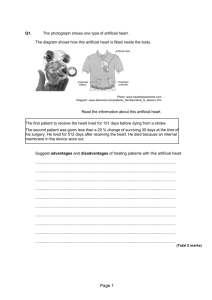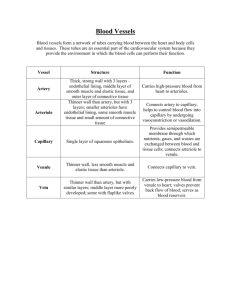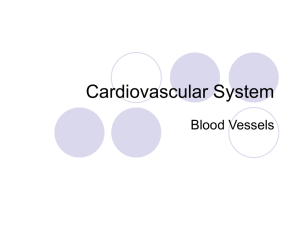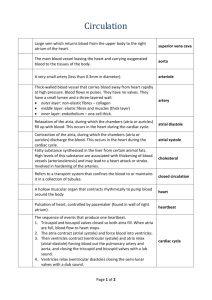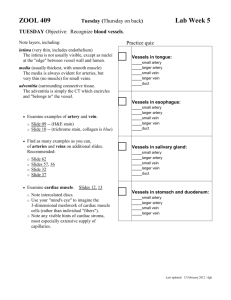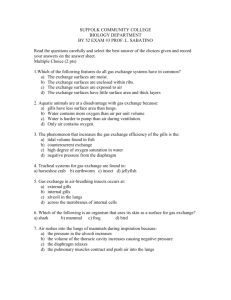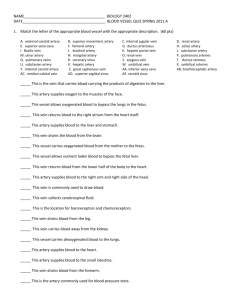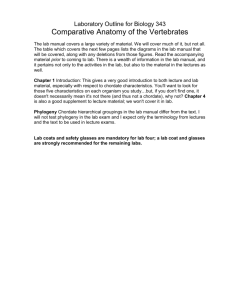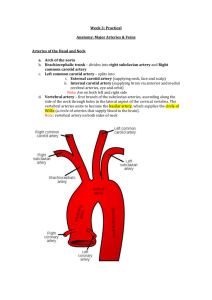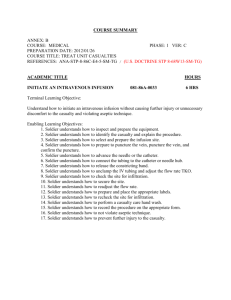Circulatory Stations
advertisement
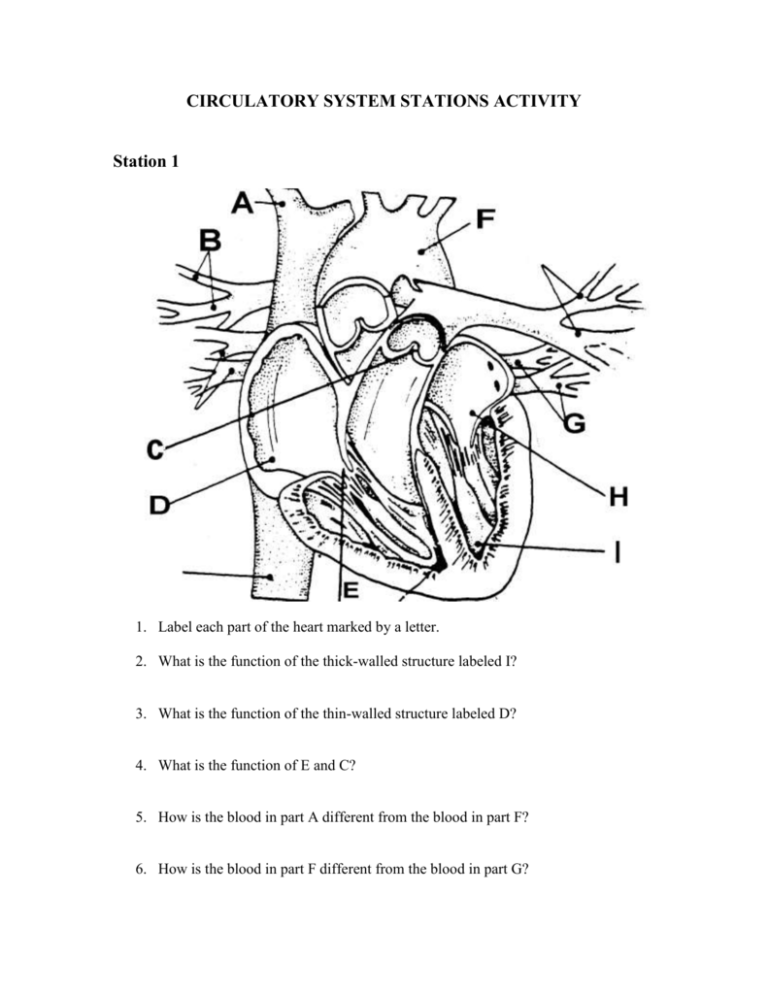
CIRCULATORY SYSTEM STATIONS ACTIVITY Station 1 1. Label each part of the heart marked by a letter. 2. What is the function of the thick-walled structure labeled I? 3. What is the function of the thin-walled structure labeled D? 4. What is the function of E and C? 5. How is the blood in part A different from the blood in part F? 6. How is the blood in part F different from the blood in part G? Station 2 7. Add arrows to show the direction of blood flow around the body. 8. Using red and blue pencils, show where blood is high in oxygen (red) and where blood is low in oxygen (blue). At some intermediate stage, let the red and blue paths overlap to appear purple. 9. Label the superior vena cava, inferior vena cava, capillaries, aorta, pulmonary vein, and pulmonary artery. 10. Label the pulmonary circuit and systemic circuit. Station 3 Examine the 3 pieces of tubing provided. 11. Which piece of tubing represents an artery? 12. What characteristics caused your selection of this piece of tubing for an artery? 13. Which piece of tubing represents a vein? 14. What characteristics caused your selection of this piece of tubing for a vein? 15. Which piece of tubing represents a capillary? 16. What characteristics caused your selection of this piece of tubing for a capillary? 17. Which type of vessel has valves? Circle the correct answer(s). Artery Vein Capillary 18. Which type of vessel flows towards the heart? Circle the correct answer(s). Artery Vein Capillary 19. Which type of vessel flows away from the heart? Circle the correct answer(s) Artery Vein Capillary 20. Which type of vessel ALWAYS carries oxygenated blood? Circle the correct answer(s). Artery Vein Capillary 21. Which type of vessel ALWAYS carries deoxygenated blood? Circle the correct answer(s). Artery Vein Capillary Station 4 22. What is a normal blood pressure reading? 23. Read the statistics about the individuals below, and classify each individual as having an average blood pressure, high blood pressure, or low blood pressure. Nikola has a blood pressure of 110/70. Her average heart rate is 72 beats per minute. In addition, the average stroke volume for her heart is 69 ml of blood per beat. Panos has a blood pressure of 120/80. His average heart rate is 65 beats per minute, and his average stroke volume is 70 ml of blood per beat. Olga has a blood pressure of 130/80. Her average heart rate is 70 beats per minute, and her average stroke volume is 65 ml of blood per beat. Apostolos has a blood pressure of 140/85. His average heart rate is 75 beats per minute, and his average stroke volume in 65 ml of blood per beat. 24. Calculate the cardiac output for each individual. 25. Use the blood pressure cuff to measure your blood pressure. Record your blood pressure here: ___________/___________ 26. What do each of these numbers from the blood pressure reading represent? Station 5 Obtain an envelope labeled “Path of Blood Scramble”. Put the pieces from the envelope in the correct order to represent the path of blood through the circulatory system. Technically, it doesn’t matter where you start because it is a cycle! When you think you have the correct order, call the teacher over to have her check it. You only get one shot at getting it right, so don’t ask to have it checked until you have your final answer! Station 6 Examine the dissected calf heart. Identify the parts that are labeled with pins.

